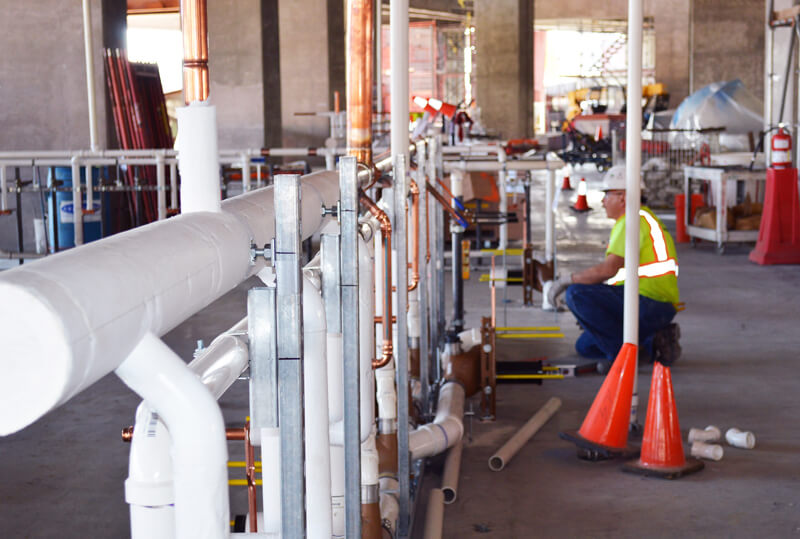Project Delivery

The adoption of lean construction and the use of Building Information Modeling (BIM) and Virtual Design (VDC) technologies have quickly advanced how Harris delivers projects. Through early access to information, clear communication, collaboration, integrated practices and open standards, we provide the best value for our customers.
Design-Build: Creating Solutions
We work directly with the clients to assess their needs and goals, then develop a plan that allows us to move seamlessly from initial design to final build using the best and most cost-effective solutions possible.
Harris is vigilant about monitoring costs throughout every project. With design-build, we can provide better transparency with up-to-date budget and schedule updates that help clients make educated financial decisions before and during implementation. We’re not afraid to push the limits of what is possible if it means finding a solution that is most effective, efficient or affordable.
Our engineering and construction expertise allows us to ask the right questions and help clients to identify and understand a project’s needs vs. their wants. We never offer the same solution twice, and relentlessly challenge our clients and our partners to discover the best solution for each project.
Design-Assist: Optimizing and Improving Solutions
The Harris team works with engineers, general contractors, subcontractors and architects to develop building designs that exceed the owner’s expectations. We work with the project team to create the initial budget model, monitor the design progress and identify cost impacts throughout the project.
The in-house team of experts at Harris provide innovative solutions in engineering, mechanical design and construction methods. Our goal is always to maintain consistency with the engineer’s design, while providing more cost-effective options for installations and applications. We do so by evaluating the development of the project and providing refined solutions for consideration throughout the construction process.
Integrated Project Delivery
Harris offers expertise in one of the construction industry’s most cutting-edge processes: Integrated Project Delivery (IPD).
IPD combines systems, business structures and people to maximize efficiency, reduce waste and optimize results. Project processes such as design, planning and construction are aligned with contractual and financial outcomes based on the owners’ goals. IPD allows for deep collaboration and transparency through a single contract incentivizes all stakeholders to help one another for the good of the entire project.
Plan and Spec
Plan and Spec is a traditional, frequently-used approach to project delivery in which an owner hires architects and designers to design the entire project. Then, it is put out to bid for construction companies to provide an estimate, lump sum or guarantee max price.
Plan and Spec is different from the Integrated Project Delivery (IPD) method in that builders have no input on the design. This approach is particularly useful for clients who know exactly what they want.
When Harris submits a Plan and Spec bid, we provide every detail in our proposal, and are not afraid to point out gaps in a design. If we see a hole in the drawings, we mention it in our proposal and directly to the owners. This generates healthy dialogue with owners and competitors, and helps create the best project plan.
We are not afraid to pass on a project if we see gaps that will force us to compromise on quality. Our integrity has helped us build long-term, trusting relationships with our clients who know that we’ll give them honest input every step of the way.
Time and Material
Owners choose this contracting method when they want to retain flexibility in design or method of execution. From the scope of work, we work with the client to identify and agree on the markup structures for all internal and third-party costs. All invoices would reflect those costs, contain all necessary backup and the agreed upon markup structures.
Time is defined as the labor rate estimated for each worker. Material is defined as any non-labor item.
We submit a detailed summary of labor rates and material costs with our proposal. Additions to a standard estimate, agreed upon upfront, may include items such as insurance or a small-tool allowance for workers.
